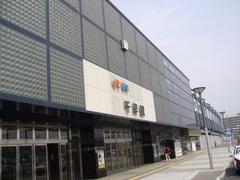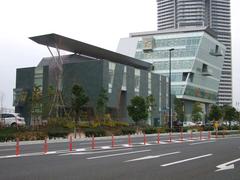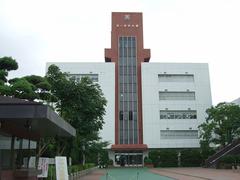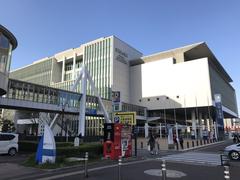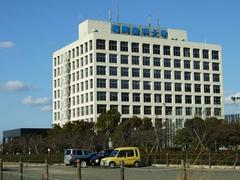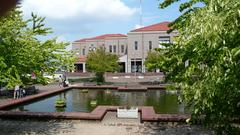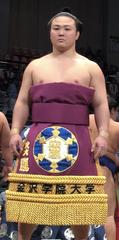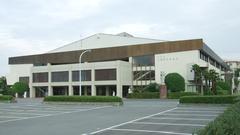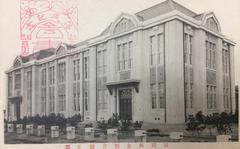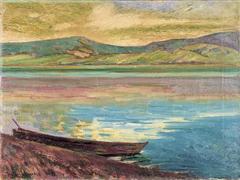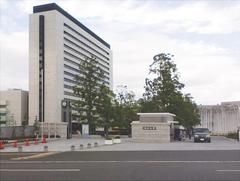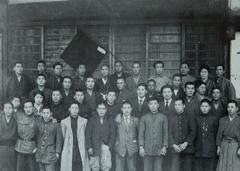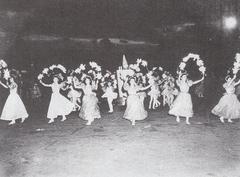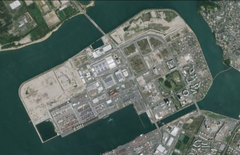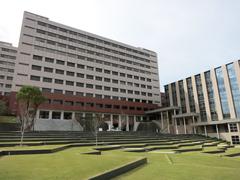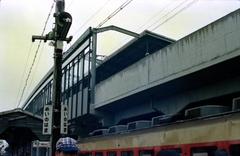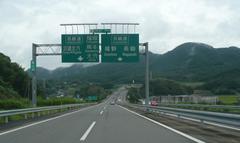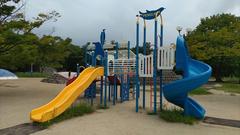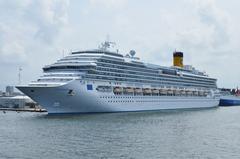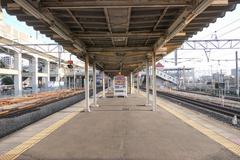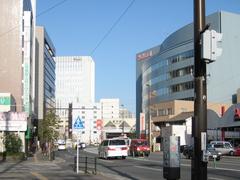Kyushu Institute of Design Visiting Hours, Tickets, and Travel Guide: Fukuoka Historical Sites
Date: 15/06/2025
Introduction
Situated in the vibrant city of Fukuoka, Japan, the Kyushu Institute of Design (KID)—now part of Kyushu University’s Faculty and Graduate School of Design—stands as a pioneering institution integrating art, science, and technology. Established in 1968, KID distinguished itself with a multidisciplinary educational philosophy that fused engineering precision with creative vision, encapsulated in the concept of “Geijutsu Kōka” or “humanizing technology.” This unique approach, pivotal during Japan’s industrial boom, has since influenced generations of designers and shaped innovative curricula in fields such as Architecture, Industrial Design, Visual Communication, Acoustic Design, and Art and Information Design.
Following its 2003 merger with Kyushu University, KID became the nucleus of the university’s design education, preserving its distinct ethos while expanding academic and research opportunities. The Ohashi Campus, renowned for its modernist architecture and active community, hosts a variety of exhibitions and public events, drawing prospective students, design professionals, and cultural travelers. Its strategic location offers easy access from Fukuoka International Airport and Hakata Station, and is surrounded by Fukuoka’s rich historical landmarks, including Kushida Shrine and the Fukuoka Castle Ruins.
This comprehensive guide details KID’s history, educational philosophy, visitor information—including hours and ticketing—campus accessibility, events, and nearby attractions, helping you plan a rewarding visit to this center of design innovation (Kyushu University School of Design; Kyushu University Overview PDF; Fukuoka History & Cultural Heritage).
Table of Contents
- Introduction
- Historical Background and Vision
- Evolution and Merger with Kyushu University
- Educational Philosophy and Curriculum
- Research and International Collaboration
- Visiting Kyushu Institute of Design
- Fukuoka’s Historical and Cultural Context
- Community Engagement and Events
- Nearby Attractions
- Frequently Asked Questions (FAQ)
- Conclusion and Visitor Recommendations
- References and Further Reading
Historical Background and Vision
Founded in 1968, the Kyushu Institute of Design was established to bridge the gap between scientific technology and artistic creativity through the principle of “Geijutsu Kōka”—the humanization of technology (Wikipedia). At a time when Japan was undergoing rapid industrialization, KID’s forward-thinking curriculum in Architecture, Industrial Design, Visual Communication Design, Acoustic Design, and Art and Information Design set new benchmarks in design education and remains influential today (Kyushu University School of Design).
Evolution and Merger with Kyushu University
In 2003, KID merged with Kyushu University, becoming the core of its Faculty and Graduate School of Design (Kyushu University Overview PDF). This integration expanded interdisciplinary opportunities and academic resources, while maintaining KID’s original vision. The Ohashi Campus, in Minami-ku, Fukuoka, continues to be a leading center for design innovation and collaboration (Kyushu University School of Design).
Educational Philosophy and Curriculum
KID’s educational mission is built on two main pillars:
- Integration of Science and Art: Students are encouraged to merge technological expertise with artistic freedom, producing functional and human-centered designs (Kyushu University School of Design).
- Addressing Societal Complexity: The curriculum prepares students to tackle complex challenges across disciplines, fostering versatility and innovation in the humanities, social sciences, and natural sciences.
Interdisciplinary studies and hands-on projects inspire creativity, preparing graduates to become leaders in design both in Japan and internationally.
Research and International Collaboration
The Faculty of Design at Kyushu University advances KID’s legacy through cutting-edge research at the intersection of design, engineering, philosophy, and the arts (KID NEXT). Projects such as KID NEXT (2015–2022) have established global networks for design research, focusing on themes like sustainability and digital transformation. The faculty regularly organizes international symposiums and events, including the SDGs Design International Awards, fostering global dialogue and innovation (KID NEXT).
Visiting Kyushu Institute of Design
Hours, Tickets, and Admission
- General Hours: Monday to Friday, 9:00 AM–5:00 PM; Saturday, 10:00 AM–4:00 PM; closed Sundays and national holidays.
- Admission: Access to the campus and most exhibitions is free. Some workshops or special events may require tickets or advance registration (Kyushu University School of Design Open Campus).
Campus Experience and Facilities
Ohashi Campus is known for its welcoming atmosphere, modernist architecture, and vibrant community. Facilities include:
- Design Commons for exhibitions and workshops
- Specialized studios and research labs
- The Kyushu University Art Museum with rotating exhibitions
- Cafeterias and local eateries nearby
The campus is pedestrian-friendly, with clear Japanese and English signage, and is fully accessible for visitors with mobility challenges.
Architecture and Exhibitions
The campus architecture emphasizes open spaces, natural light, and community integration. Notable features include:
- Flexible studios and open courtyards
- Barrier-free pathways and accessible restrooms
- Rotating exhibitions featuring student and faculty projects, often on themes like sustainability and user-centered design
Signature events such as “Wow! Design Experiences” offer interactive workshops and hands-on activities for visitors of all ages.
Accessibility and Transportation
- Wheelchair Access: Ramps, elevators, and accessible facilities are available throughout the campus.
- Public Transit: The campus is a 5-minute walk from Ohashi Station (Nanakuma Subway Line), with convenient bus routes and nearby parking for bicycles (Ohashi Campus Access).
- From Fukuoka Airport: Subway to Tenjin, then Nishitetsu Ōmuta Line to Ohashi Station; taxi rides take 20–30 minutes (Fukuoka Now).
- From Hakata Station: Subway or bus to Ohashi Station; taxis are also available.
Practical Visitor Tips
- Language: Most exhibitions have English descriptions, but some signage may be in Japanese.
- Photography: Permitted in most public areas; observe posted restrictions.
- Family-Friendly: Interactive workshops and exhibits cater to all ages.
- Best Times to Visit: Early June (Facility Open Day), cherry blossom season (late March–early April), and during major exhibitions.
Fukuoka’s Historical and Cultural Context
Fukuoka has been a cultural crossroads for over 1,500 years (Fukuoka History & Cultural Heritage). The city’s traditions in crafts such as Hakata-ori textiles and dolls are reflected in KID’s curriculum and community engagement. Proximity to landmarks like Kushida Shrine and the Fukuoka Castle ruins enriches the campus environment, offering inspiration from religious and historical traditions (Influence of Buddhism and Shintoism in Fukuoka).
Community Engagement and Events
- Annual Exhibitions: Graduation shows and student exhibitions are held in February–March, open to the public and free of charge.
- Workshops and Lectures: Throughout the year, KID holds public lectures, symposia, and hands-on workshops, often with guest speakers from around the world.
- Festival Participation: KID contributes to Fukuoka’s major festivals, designing parade floats and costumes for events like Hakata Dontaku and Hakata Gion Yamakasa (Hakata Dontaku Port Festival).
- Regional Art Initiatives: Partnerships with the Fukuoka Asian Art Triennale and Fukuoka Art Museum connect the Institute with broader artistic movements (Fukuoka Art Museum).
Nearby Attractions
Enhance your visit by exploring Fukuoka’s highlights:
- Fukuoka Castle Ruins: A scenic window into samurai history.
- Ohori Park: Ideal for relaxation and walking.
- Canal City Hakata: Shopping and entertainment.
- Kushida Shrine: Known for vibrant festivals and cultural events.
- Maizuru Park and Hakata Machiya Folk Museum: Further immerse yourself in local history and culture (Fukuoka’s Historic Sites).
Frequently Asked Questions (FAQ)
Q: What are the Kyushu Institute of Design visiting hours?
A: Monday–Friday, 9:00 AM–5:00 PM; Saturday, 10:00 AM–4:00 PM; closed Sundays and holidays.
Q: Is there an entrance fee or tickets required?
A: Most exhibitions are free; some workshops may require registration or a nominal fee.
Q: Are guided tours available?
A: Guided tours are offered during open campus days and by appointment.
Q: Is the campus accessible for visitors with disabilities?
A: Yes, the campus features barrier-free facilities, ramps, and accessible restrooms.
Q: Can visitors take photographs?
A: Photography is generally allowed unless otherwise indicated.
Q: How do I get there from Fukuoka Airport or Hakata Station?
A: Take subway and train routes to Ohashi Station (5-minute walk to campus); taxis and buses are also available (Fukuoka Now).
Conclusion and Visitor Recommendations
A visit to the Kyushu Institute of Design offers a unique intersection of cutting-edge design education and Fukuoka’s rich cultural landscape. The Ohashi Campus welcomes visitors with accessible hours, free exhibitions, and a variety of public events. Its inclusive facilities, innovative architecture, and proximity to historical sites provide a comprehensive and inspiring experience for design lovers, families, and cultural explorers alike.
For the latest updates on visiting hours, events, or guided tours, consult the Kyushu University School of Design website. Enhance your visit by downloading the Audiala app for guided tours and notifications, and follow the Faculty of Design on social media for news on exhibitions and community activities.
References and Further Reading
- Kyushu University School of Design
- Kyushu University Overview PDF
- Kyushu University School of Design Open Campus
- Fukuoka History & Cultural Heritage
- Fukuoka Now
- Fukuoka Now: Convenient Transportation Passes
- Hakata Dontaku Port Festival
- KID NEXT
Image Suggestions:
- Photo of Kyushu Institute of Design main building (alt: “Kyushu Institute of Design Ohashi Campus main building”)
- Campus aerial view with green spaces (alt: “Aerial view of Kyushu Institute of Design campus”)
- Map showing transit routes to campus (alt: “Map showing Kyushu Institute of Design in Fukuoka city”)
- Festival float designed by KID students for Hakata Gion Yamakasa (alt: “Festival float designed by Kyushu Institute of Design students”)
